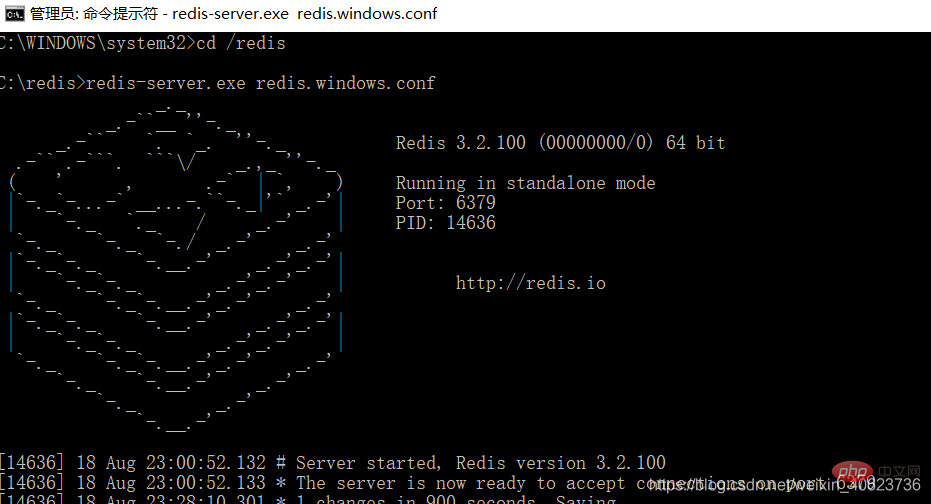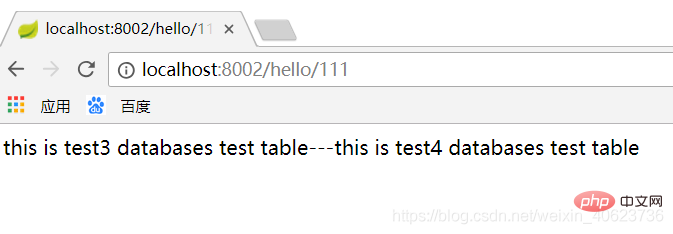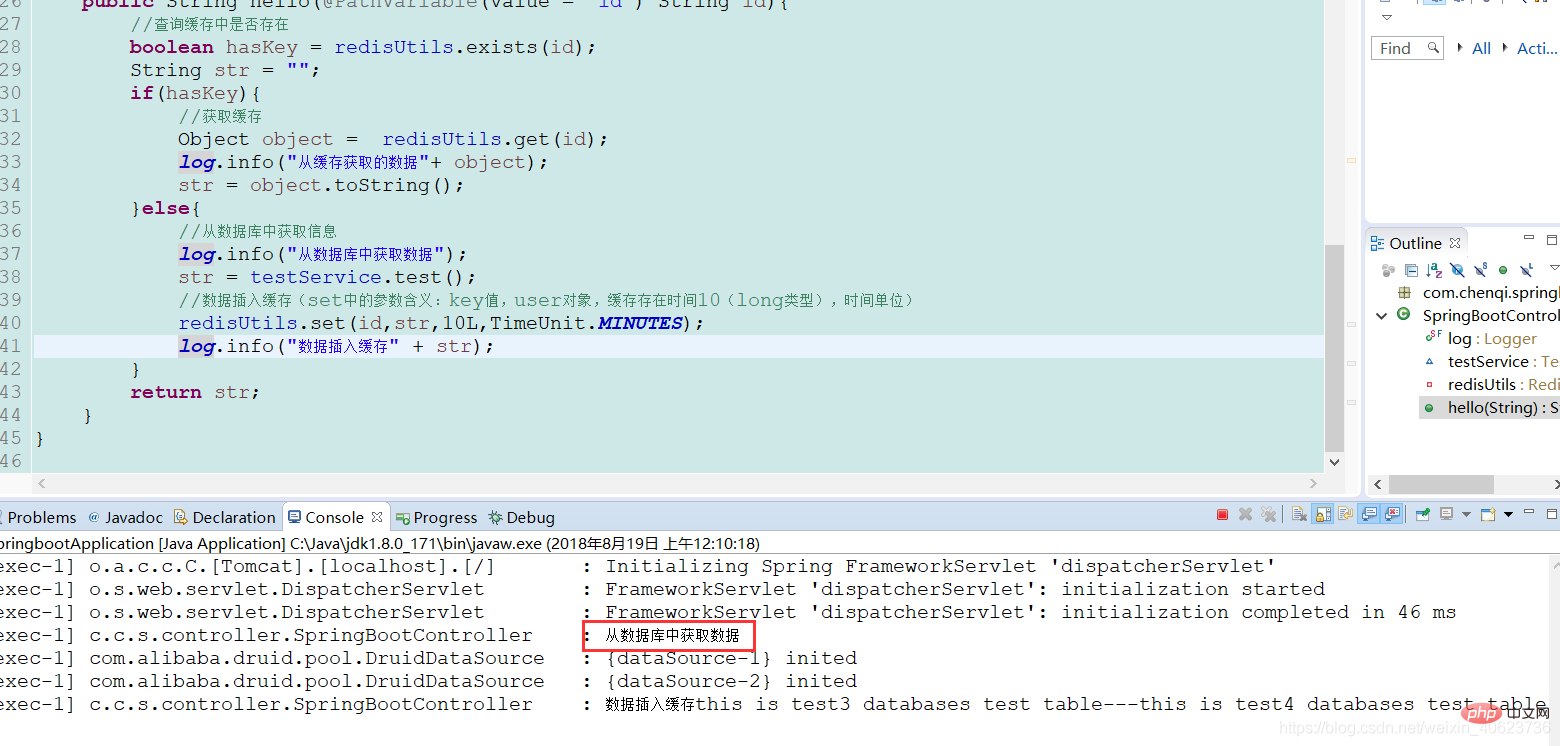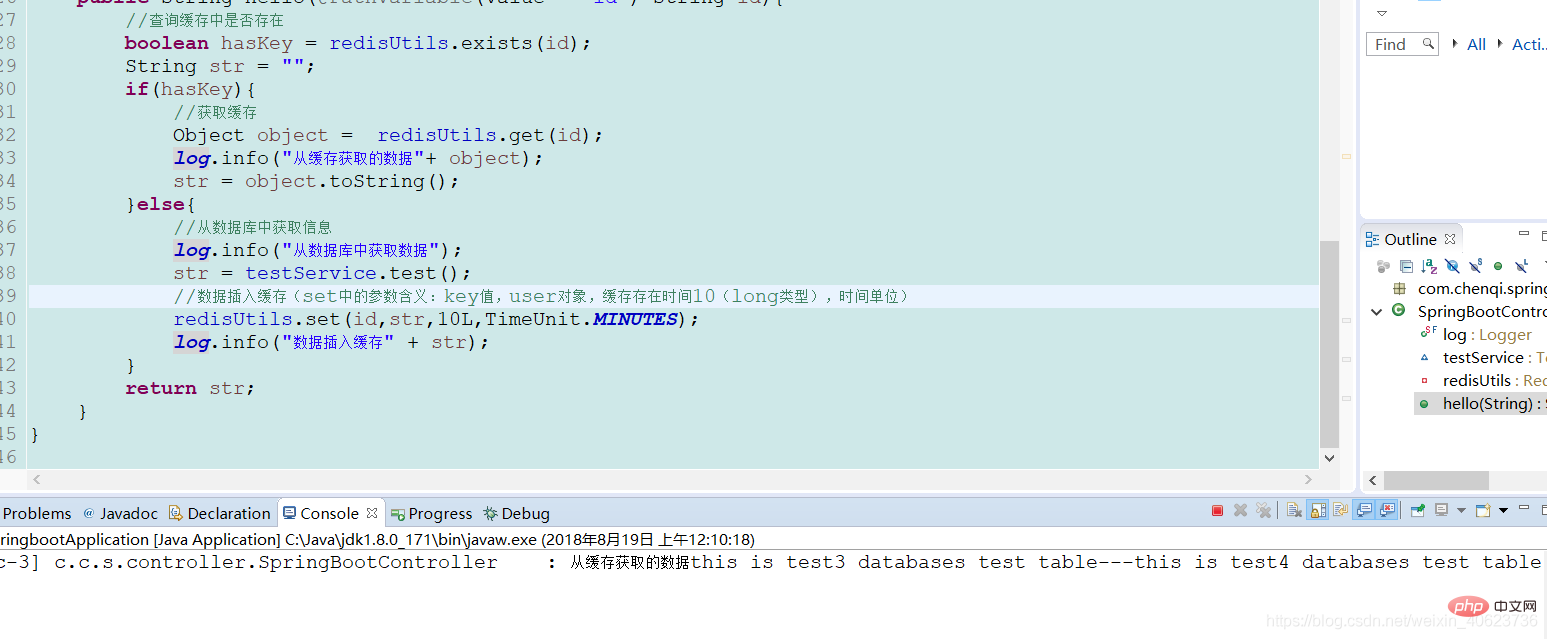SpringBoot が Redis を統合する方法
- coldplay.xixi転載
- 2021-01-25 10:19:052074ブラウズ

推奨 (無料): redis チュートリアル
今日、太陽と月が登場します。 SpringBoot を使用して Redis を統合するにはどうすればよいですか? 正直に言うと、これは比較的簡単で、インターネット上にチュートリアルがたくさんあります。まずはインターネット上の紹介を応用してみましょう。
定義
REmote DIctionary Server (Redis) は、Salvatore Sanfilippo によって作成されたキー/値ストレージ システムです。
Redis は、ANSI C 言語で書かれたオープンソースのログタイプの Key-Value データベースで、BSD プロトコルに準拠し、ネットワークをサポートし、メモリベースで永続化でき、複数の言語で API を提供します。
値には文字列、ハッシュ (マップ)、リスト、セット、ソートされたセットなどのタイプがあるため、データ構造サーバーと呼ばれることがよくあります。
reids の利点
Redis の利点のいくつかを次に示します。
非常に高速 - Redis は非常に高速で、1 秒あたり約 110,000 の設定 (SET) 操作と、1 秒あたり約 81,000 の読み取り/取得 (GET) 操作を実行できます。
豊富なデータ型のサポート - Redis は、リスト、セット、ソートされたセット、ハッシュなど、開発者が一般的に使用するほとんどのデータ型をサポートします。これにより、どのデータ型を使用するとどの問題をよりよく解決できるかがわかるため、Redis を使用してさまざまな問題を解決しやすくなります。
操作はアトミックです - すべての Redis 操作はアトミックであるため、2 つのクライアントが同時にアクセスした場合でも、Redis サーバーは更新された値を受け取ることができます。
マルチユーティリティ - Redis はマルチユーティリティであり、キャッシュ、メッセージキュー (Redis はネイティブにパブリッシュ/サブスクライブをサポート)、アプリケーション内の短期データ (Web など) などの複数のユースケースに使用できます。アプリケーションセッション、ページヒット数など。
Redis のインストール
Windows へのインストール
ダウンロード アドレス: https://github.com/MSOpenTech/redis/releases。
Redis は 32 ビットと 64 ビットをサポートします。これは、システム プラットフォームの実際の状況に応じて選択する必要があります。ここでは、Redis-x64-xxx.zip 圧縮パッケージを C ドライブにダウンロードし、解凍後、フォルダーの名前を redis に変更します。
cmd ウィンドウを開き、cd コマンドを使用してディレクトリを C:\redis
に切り替えます。redis-server.exe redis.windows.conf
を実行します。システム環境変数にredisのパスが追加されるので再度パスを入力する必要がありません 以下のredis.windows.confは省略可能です 省略した場合はデフォルトのものが使用されます有効になります。入力後、次のインターフェイスが表示されます: 
Integrated redis
前の章のプロジェクトを引き続き使用します: Springboot Integrated springcloud-config 実装 dataSource ホット デプロイメント
1. 依存関係を追加します
<!--集成redis--> <dependency> <groupid>org.springframework.boot</groupid> <artifactid>spring-boot-starter-redis</artifactid> <version>1.4.1.RELEASE</version> </dependency> <dependency> <groupid>com.alibaba</groupid> <artifactid>fastjson</artifactid> <version>1.2.3</version> </dependency> <dependency> <groupid>com.fasterxml.jackson.core</groupid> <artifactid>jackson-databind</artifactid> </dependency>
2. 構成センターに Redis 構成を追加します
spring.redis.host=127.0.0.1 #Redis服务器连接端口 spring.redis.port=6379 #Redis服务器连接密码(默认为空) spring.redis.password= #连接池最大连接数(使用负值表示没有限制) spring.redis.pool.max-active=8 #连接池最大阻塞等待时间(使用负值表示没有限制) spring.redis.pool.max-wait=-1 #连接池中的最大空闲连接 spring.redis.pool.max-idle=8 #连接池中的最小空闲连接 spring.redis.pool.min-idle=0 #连接超时时间(毫秒) spring.redis.timeout=30000
3. 構成クラス RedisConfig
import java.lang.reflect.Method;
import org.springframework.beans.factory.annotation.Value;
import org.springframework.cache.CacheManager;
import org.springframework.cache.annotation.CachingConfigurerSupport;
import org.springframework.cache.annotation.EnableCaching;
import org.springframework.cache.interceptor.KeyGenerator;
import org.springframework.cloud.context.config.annotation.RefreshScope;
import org.springframework.context.annotation.Bean;
import org.springframework.context.annotation.Configuration;
import org.springframework.data.redis.cache.RedisCacheManager;
import org.springframework.data.redis.connection.RedisConnectionFactory;
import org.springframework.data.redis.connection.jedis.JedisConnectionFactory;
import org.springframework.data.redis.core.RedisTemplate;
import org.springframework.data.redis.core.StringRedisTemplate;
import org.springframework.data.redis.serializer.Jackson2JsonRedisSerializer;
import com.fasterxml.jackson.annotation.PropertyAccessor;
import com.fasterxml.jackson.annotation.JsonAutoDetect;
import com.fasterxml.jackson.databind.ObjectMapper;
@Configuration
@EnableCaching
@RefreshScope
public class RedisConfig extends CachingConfigurerSupport{
@Value("${spring.redis.host}")
private String host;
@Value("${spring.redis.port}")
private int port;
@Value("${spring.redis.timeout}")
private int timeout;
@Value("${spring.redis.password}")
private String password;
@Value("${spring.redis.pool.max-active}")
private int maxActive;
@Value("${spring.redis.pool.max-wait}")
private int maxWait;
@Value("${spring.redis.pool.max-idle}")
private int maxIdle;
@Value("${spring.redis.pool.min-idle}")
private int minIdle;
@RefreshScope
@Bean
public KeyGenerator wiselyKeyGenerator(){
return new KeyGenerator() {
@Override
public Object generate(Object target, Method method, Object... params) {
StringBuilder sb = new StringBuilder();
sb.append(target.getClass().getName());
sb.append(method.getName());
for (Object obj : params) {
sb.append(obj.toString());
}
return sb.toString();
}
};
}
@RefreshScope
@Bean
public JedisConnectionFactory redisConnectionFactory() {
JedisConnectionFactory factory = new JedisConnectionFactory();
factory.setHostName(host);
factory.setPort(port);
factory.setTimeout(timeout); //设置连接超时时间
factory.setPassword(password);
factory.getPoolConfig().setMaxIdle(maxIdle);
factory.getPoolConfig().setMinIdle(minIdle);
factory.getPoolConfig().setMaxTotal(maxActive);
factory.getPoolConfig().setMaxWaitMillis(maxWait);
return factory;
}
@RefreshScope
@Bean
public CacheManager cacheManager(RedisTemplate redisTemplate) {
RedisCacheManager cacheManager = new RedisCacheManager(redisTemplate);
// Number of seconds before expiration. Defaults to unlimited (0)
cacheManager.setDefaultExpiration(10); //设置key-value超时时间
return cacheManager;
}
@RefreshScope
@Bean
public RedisTemplate<string> redisTemplate(RedisConnectionFactory factory) {
StringRedisTemplate template = new StringRedisTemplate(factory);
setSerializer(template); //设置序列化工具,这样ReportBean不需要实现Serializable接口
template.afterPropertiesSet();
return template;
}
@RefreshScope
private void setSerializer(StringRedisTemplate template) {
Jackson2JsonRedisSerializer jackson2JsonRedisSerializer = new Jackson2JsonRedisSerializer(Object.class);
ObjectMapper om = new ObjectMapper();
om.setVisibility(PropertyAccessor.ALL, JsonAutoDetect.Visibility.ANY);
om.enableDefaultTyping(ObjectMapper.DefaultTyping.NON_FINAL);
jackson2JsonRedisSerializer.setObjectMapper(om);
template.setValueSerializer(jackson2JsonRedisSerializer);
}
}</string>
4. RedisUtils クラス
import java.io.Serializable;
import java.util.List;
import java.util.Set;
import java.util.concurrent.TimeUnit;
import org.springframework.beans.factory.annotation.Autowired;
import org.springframework.data.redis.core.HashOperations;
import org.springframework.data.redis.core.ListOperations;
import org.springframework.data.redis.core.RedisTemplate;
import org.springframework.data.redis.core.SetOperations;
import org.springframework.data.redis.core.ValueOperations;
import org.springframework.data.redis.core.ZSetOperations;
import org.springframework.stereotype.Service;
@Service
public class RedisUtils {
@Autowired
private RedisTemplate redisTemplate;
/**
* 写入缓存
* @param key
* @param value
* @return
*/
public boolean set(final String key, Object value) {
boolean result = false;
try {
ValueOperations<serializable> operations = redisTemplate.opsForValue();
operations.set(key, value);
result = true;
} catch (Exception e) {
e.printStackTrace();
}
return result;
}
/**
* 写入缓存设置时效时间
* @param key
* @param value
* @return
*/
public boolean set(final String key, Object value, Long expireTime ,TimeUnit timeUnit) {
boolean result = false;
try {
ValueOperations<serializable> operations = redisTemplate.opsForValue();
operations.set(key, value);
redisTemplate.expire(key, expireTime, timeUnit);
result = true;
} catch (Exception e) {
e.printStackTrace();
}
return result;
}
/**
* 批量删除对应的value
* @param keys
*/
public void remove(final String... keys) {
for (String key : keys) {
remove(key);
}
}
/**
* 批量删除key
* @param pattern
*/
public void removePattern(final String pattern) {
Set<serializable> keys = redisTemplate.keys(pattern);
if (keys.size() > 0){
redisTemplate.delete(keys);
}
}
/**
* 删除对应的value
* @param key
*/
public void remove(final String key) {
if (exists(key)) {
redisTemplate.delete(key);
}
}
/**
* 判断缓存中是否有对应的value
* @param key
* @return
*/
public boolean exists(final String key) {
return redisTemplate.hasKey(key);
}
/**
* 读取缓存
* @param key
* @return
*/
public Object get(final String key) {
Object result = null;
ValueOperations<serializable> operations = redisTemplate.opsForValue();
result = operations.get(key);
return result;
}
/**
* 哈希 添加
* @param key
* @param hashKey
* @param value
*/
public void hmSet(String key, Object hashKey, Object value){
HashOperations<string> hash = redisTemplate.opsForHash();
hash.put(key,hashKey,value);
}
/**
* 哈希获取数据
* @param key
* @param hashKey
* @return
*/
public Object hmGet(String key, Object hashKey){
HashOperations<string> hash = redisTemplate.opsForHash();
return hash.get(key,hashKey);
}
/**
* 列表添加
* @param k
* @param v
*/
public void lPush(String k,Object v){
ListOperations<string> list = redisTemplate.opsForList();
list.rightPush(k,v);
}
/**
* 列表获取
* @param k
* @param l
* @param l1
* @return
*/
public List<object> lRange(String k, long l, long l1){
ListOperations<string> list = redisTemplate.opsForList();
return list.range(k,l,l1);
}
/**
* 集合添加
* @param key
* @param value
*/
public void add(String key,Object value){
SetOperations<string> set = redisTemplate.opsForSet();
set.add(key,value);
}
/**
* 集合获取
* @param key
* @return
*/
public Set<object> setMembers(String key){
SetOperations<string> set = redisTemplate.opsForSet();
return set.members(key);
}
/**
* 有序集合添加
* @param key
* @param value
* @param scoure
*/
public void zAdd(String key,Object value,double scoure){
ZSetOperations<string> zset = redisTemplate.opsForZSet();
zset.add(key,value,scoure);
}
/**
* 有序集合获取
* @param key
* @param scoure
* @param scoure1
* @return
*/
public Set<object> rangeByScore(String key,double scoure,double scoure1){
ZSetOperations<string> zset = redisTemplate.opsForZSet();
return zset.rangeByScore(key, scoure, scoure1);
}</string></object></string></string></object></string></string></object></string></string></string></serializable></serializable></serializable></serializable>
5. コントローラーのテストと変更
import java.util.concurrent.TimeUnit;
import org.slf4j.Logger;
import org.slf4j.LoggerFactory;
import org.springframework.beans.factory.annotation.Autowired;
import org.springframework.web.bind.annotation.PathVariable;
import org.springframework.web.bind.annotation.RequestMapping;
import org.springframework.web.bind.annotation.RestController;
import com.chenqi.springboot.redis.RedisUtils;
import com.chenqi.springboot.service.TestService;
@RestController
public class SpringBootController {
public static final Logger log = LoggerFactory.getLogger(SpringBootController.class);
@Autowired
TestService testService;
@Autowired
private RedisUtils redisUtils;
@RequestMapping(value = "/hello/{id}")
public String hello(@PathVariable(value = "id") String id){
//查询缓存中是否存在
boolean hasKey = redisUtils.exists(id);
String str = "";
if(hasKey){
//获取缓存
Object object = redisUtils.get(id);
log.info("从缓存获取的数据"+ object);
str = object.toString();
}else{
//从数据库中获取信息
log.info("从数据库中获取数据");
str = testService.test();
//数据插入缓存(set中的参数含义:key值,user对象,缓存存在时间10(long类型),时间单位)
redisUtils.set(id,str,10L,TimeUnit.MINUTES);
log.info("数据插入缓存" + str);
}
return str;
}
}
プロジェクトを開始し、初めてアクセスします: http://localhost:8002/hello/111

コンソール出力を通じて、次のことがわかります。データはデータベースから取得され、redis キャッシュに保存されます。
もう一度ブラウザを更新しましょう
2 回目にキャッシュから読み取られることがわかります。ブラウザを継続的に更新してみましょう
ご覧のとおり、その後、すべてがキャッシュから取得されます。
これで、redis が構成されました。
SpringBoot 統合 Redis デモのダウンロード
デモが緊急に必要な場合は、ご自身でダウンロードしてください。急いでいない場合は、メール アドレスにメッセージを残してください。通常は、 48時間以内に送信してください。
さらに関連する学習については、redis 列に注目してください。
以上がSpringBoot が Redis を統合する方法の詳細内容です。詳細については、PHP 中国語 Web サイトの他の関連記事を参照してください。

